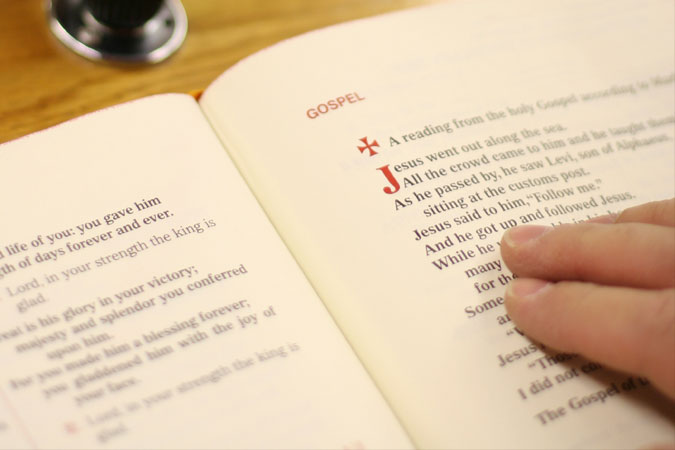
This is the fourth article in a series about liturgical catechesis.
Here is the reality: a 2015 study by the Center for Applied Research in the Apostolate (CARA) revealed that despite our best efforts, only 22% of Catholic parents take their kids to Sunday Mass. That means proclaiming the Gospel in the classroom may be the only way the story of Jesus Christ and his message reaches more than three-fourths of children in religious education.
Certainly, your textbook includes Scripture passages, but engaging with the Sunday Gospels is a primary way to help young people develop a fully Catholic lifestyle based on living the liturgical year. Catechists should regularly proclaim and refer to the Gospel readings from the Sunday liturgy, benefitting not only those who hear these words at Mass, but especially those who won’t be at Mass to hear them.
Here are four ways to connect your class to the Gospel reading from Sunday’s Mass:
- Formally. Use the Sunday Connection or another resource that includes the Gospel readings to open or close the session. You can e-mail it to parents or give a copy to young people to take home with them. This will remind students and parents about attending Sunday Mass.
- Informally. Make references to the Gospel reading from Sunday’s Mass during classroom discussions. Such references can help demonstrate how the Gospel readings can be applied to their daily lives.
- Visually. As a classroom activity, invite students to engage with picture Bibles, videos, and creative exercises such as drawing or acting out a scene from that Sunday’s Gospel reading. Use a picture and engage the young people in visio divina (“divine seeing”). Project a picture on a screen or provide a paper copy to each student, and have them study it for a few moments in silence. Then ask them to share what they see. Arts and Faith: Advent and Lent offer great resources for connecting with the Gospel readings from Sunday’s Mass. You can use these with older students, or e-mail the links to parents.
- Imaginatively. Make use of guided meditations to bring the Gospel scene alive. Invite students to imagine themselves in the place and time of the Gospel story. Describe the scene for them, or read the words of Scripture. Ask them to observe what they see and interact with Jesus or other characters in the story. Afterwards, allow children some quiet time to pray or write in a journal.
Making the connection between what we hear at Mass and what children learn in class is one of the most important things a catechist can do. How do you help your students connect to the Sunday liturgy?
Read the first three articles in the series:
Why Become a Liturgical Catechist?
Sights, Sounds, and Movements: Connecting the Liturgy to the Classroom
Smells and Bells: Props for the Catechetical Session





Be the first to comment